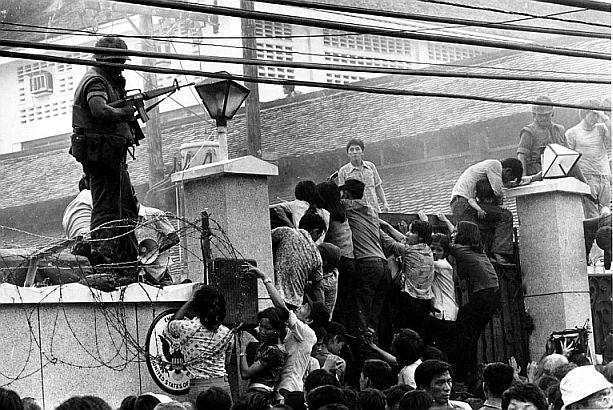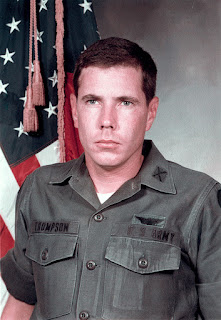This review originally appeared in the online site,Critics at Large, June 21/15 and reproducing on this website because, although I did not write about Vietnam in That Line of Darkness: The Gothic from Lenin to bin Laden (Encompass Editions, 2013) I did discuss the power of Marxist Leninism ideology and its often inhuman implementation and the anti-communist hysteria of the Cold War and its military responses.
 |
| The American Embassy in Saigon, on April 29, 1975. (Photo by Neal Ulevich) |
“This fantasy of Americans as rescuers has re-emerged in Rory Kennedy’s documentary Last Days in Vietnam … telling a story that is good for the American soul. The movie depicts how, in the final hours of American involvement in Vietnam, a handful of courageous Americans initiated the rescue of 130,000 South Vietnamese allies from the clutches of evil communists…It was exactly what I thought it was going to be, American good intentions get reaffirmed. Although Vietnamese faces end the film, they are just victims who are grateful to Americans.”– Viet Thanh Nguyen on the Last Days in Vietnam (2014)
When I first saw Rory Kennedy’s must-heralded documentary, Last Days in Vietnam, I was moved by the humanitarian and heroic impulses of Americans, notably the former US Army officer, Stuart Herrington, to rescue as many as possible South Vietnamese soldiers and civilians on planes, ships and helicopters. These efforts are presented as saving them from an impending bloodbath perpetrated by barbaric hordes from the North. But as I watched the film more carefully and read reviews by Vietnamese who in 1975 were young children, I began to harbour misgivings about the film. There is little in the way of context. Although the film rightly mentions the Communist massacres at Hue, it says nothing about the successive corrupt South Vietnamese regimes that enjoyed no public support, that foisted on its people, for example, the vastly unpopular Strategic Hamlet program that relocated peasants to areas where they would be isolated from the Viet Cong, supposedly protected by militias and barbed wire. Nor does the film allude to the American carpet bombing or the effects of Agent Orange, a toxic herbicide that continues to afflict Vietnamese (and some Americans)suffering from mangled limbs, physical and psychological disorders. We sometimes forget that four million people died, half of them civilian. It does not help that the film frequently shows a map with a spreading, blood-red stain to indicate communist advances, akin to the creeping communism commonly depicted in Cold War-era graphics. And if the Vietnamese are not invisible, they only appear as uniformly grateful.
A much more complex and nuanced perspective about Vietnam and American culture can be found in the dazzling debut novel, The Sympathizer (Grove Press, 2015) by Viet Thanh Nguyen, a professor of English and American Studies and Ethnicity at the University of Southern California in Los Angeles. When the author was four years old, he escaped from Vietnam with his parents and brother in 1975 and has written movingly about that time and growing up in California.


